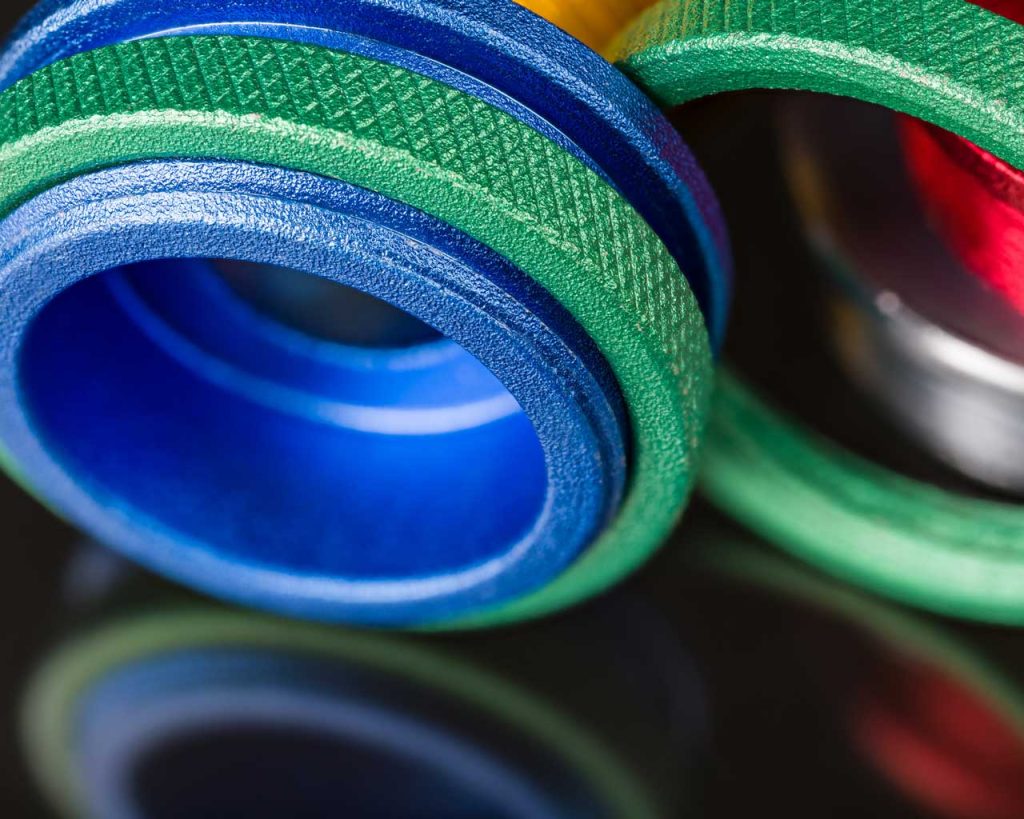The global metal anodizing market reached a value of $3.06 billion in 2021.
There are many different metal finishing techniques that serve a range of purposes. Among these, anodizing is one of the most popular. It’s considered a very important part of CNC machining and can give metal parts multiple desirable properties.
So what is anodizing, and how can it benefit you?
What Is Anodizing?
Anodizing is a process that forms a specialized coating on the surface of metal parts. It’s typically used on aluminum parts, but is also sometimes done with the following metals:
- Magnesium
- Titanium
- Tantalum
- Zinc
- Niobium
The process gives the part an oxide surface layer which alters both the physical properties and the appearance. This is done through an electromechanical process and provides benefits that can make parts more suitable for use in certain environments. The coating is very durable, which helps the part retain its appearance even after extended use.
How Anodizing Works
The entire anodizing process consists of 5 main steps. These include cleaning, etching, anodizing, coloring, and sealing.
1. Cleaning
Cleaning ensures things like dirt and grease aren’t on the surface. This is generally done via sandblasting, then submerging the pat in a detergent bath. Doing this ensures the finished part will have an even surface.
2. Etching
This involves using caustic or acid etch to remove any surface imperfections. A thin layer on the surface is removed, providing a matte finish that will give a uniform surface in the end.
3. Anodizing
The part is connected to an anode (positive terminal) of an electrical circuit. It’s then submerged in an acidic electrolyte solution made up of different chemical compounds. These compounds provide positive and negative ions.
The part is secured to keep it in place, and the cathode (negative terminal) is connected to a metal electrode in the bath. A voltage is then sent through the circuit. This causes the positive ions from the part’s surface to attract to the cathode, leaving the surface porous.
The part itself attracts negative ions from the solution which react with the surface, causing a layer of aluminum oxide to form.
4. Coloring
There are a few different coloring processes available, such as integral coloring, electrolyte coloring, and organic coloring. The colors available will depend on the type of anodizing used, as some types make parts easier to color than others.
5. Sealing
The final surface is porous, so it needs sealing to ensure maximum protection. A nickel acetate solution is used for this, leaving the part with a durable and visually appealing surface.
Types of Anodizing
There are various types of anodizing, with the most common being Type I, Type II, and Type III. The type used for a specific part will depend on the material in question and its intended use.
Type I – Chromic Acid Anodizing
Type I anodizing forms a thinner coat than other types, but still provides the same level of corrosion protection. As it’s thinner, the layer absorbs less color, leaving it grayer than the other types (although it can be dyed black). This type of anodizing works well for bonding and is non-conductive.
Some typical applications include aerospace components, precision machined components, and welded products/assemblies.
Type II – Boric-Sulfuric Acid Anodizing
This is often used over Type I anodizing as it presents fewer worker health and safety concerns. Another reason for using this type is to provide parts with corrosion resistance and improve paint adhesion. It’s also more energy efficient than Type I, so you can save on costs.
This type doesn’t change the dimensions of the part being anodized, so it’s great for tight tolerance parts. It’s often used for precision machined parts and aerospace components.
Type III – Sulfuric Acid Anodizing
Type III anodizing is the most common method and forms a thicker layer than Type I or II. A thicker layer helps make parts harder and more abrasion-resistant. This technique generally costs less than the other types, so may be ideal if you’re working to a budget.
It also makes it easier to dye, giving you more choice when it comes to final colors. Some common uses include medical device components, military weapons, and hydraulic valve bodies.
Benefits of Anodizing
The properties of anodizing provide a range of benefits for parts. Depending on the application of the part, it may benefit from some or all of these improvements.
Durability
This is perhaps the most notable benefit of anodizing, and it’s helpful with almost all common anodizing applications. It makes parts more resistant to corrosion and abrasion, meaning they can be used in different environments and they’ll have a longer lifespan.
Aesthetics
The surface finish of an anodized part is generally more appealing than a standard aluminum part. You may also have a range of color choices available if you want the part to have a certain look.
Environmental
Some people assume that the anodizing process will affect the recyclability of an aluminum part. In reality, the part can still be recycled, without the need to remove the anodized surface. The process also produces naturally occurring oxides that are non-toxic and chemically stable.
Ease of Maintenance
Anodized parts are incredibly easy to look after. You just need to wipe the surface with water and mild soaps to keep them clean.
Your Anodized Parts
You’re no longer wondering “what is anodizing?” but you may still be unsure about how to get it done. At NAMF we can anodize aluminum parts, as well as other meal parts, as needed. We also offer a range of other services such as metal fabrication, custom CNC milling, and dip brazing.
If you want to know more about our services or have any other questions, click here to contact us today.





